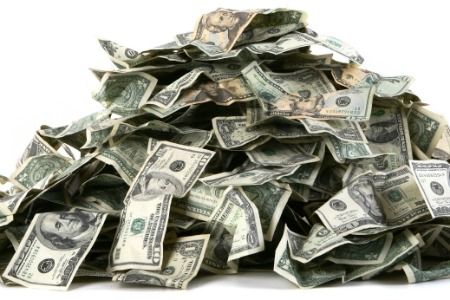An Easy $80 Billion in Savings
Cutting at least $1 trillion in government spending over the next decade is going to require some real tradeoffs and cuts to programs (defense, social security, and Medicare) that everyone agrees need to exist in one form or another. Nonetheless, there’s also real waste. Here are more than $80 billion in cuts that could probably be made next year with no harm to anyone.
1. Although it’s often a rhetorical target for those interested in cutting governemnt, about half of the Department of Energy budget—nuclear security, nuclear cleanup, and basic research—consists of core government functions that would surely be performed with tax dollars no matter what happens. (Nuclear security/cleanup alone is $16 billion.) The other half of its spending, consists of applied energy research that the private sector should do on its own. Total savings: About $18 billion.
2. Although some libertarians who can’t be bothered to read its budget deride The Department of Agriculture as pointless subsidies for farmers, 74 percent of its $121 billion proposed 2012 budget consists of nutrition assistance programs like SNAP (previously known as “food stamps”) that probably can’t be abolished altogether. The remaining parts of the Department also sustained reasonably deep cuts in last year’s budget and has been slated for even more by the Obama administration. Still, the direct subsidies to farmers provided under the budget—about $9 billion for “rural development” (a lot of it broadband Internet subsidies for areas where nobody lives), the Risk Management agency that subsidies crop insurance (about $6 billion when all costs are included), and $12.52 billion (yes, that’s all) in what people think of as farm subsidies that support the prices of crops through“Farm and Agricultural Services” programs. The United States Forest Service, which spends about $6 billion a year, probably should go on spending about the same amount and continue spending on firefighting and conservation but could probably get at least $2 billion more from forest products companies that currently get paid to chop down trees. If it stops people from buying junk food with their government benefits, furthermore, SNAP could probably be cut about 10 percent or $9 billion. Total savings: about $30 billion.
3. Nursing homes: Current Medicaid policies give enormous financial support to people who move into nursing homes rather than staying at home in their communities with their families (what most older people want to do anyway.) The nursing home budget, roughly $100 billion per year, could probably be cut in half although at least half of the savings would then have to be used to increase home care spending. Total savings: about $25 billion.
4. Medicare Advantage: The single best feature of the health care bill that passed last year was its steep cutbacks in Medicare Advantage, the poorly structured corporate subsidy that provided inferior but more expensive “private” care to people on Medicare. Although some sort of voucher-like approach makes sense, Medicare Advantage has lower overall satisfaction than plain-vanilla Medicare and is slated for what’s pretty close to a phase-out anyway. Getting rid of all Medicare Advantage subsidies next year wouldn’t hurt anyone. Total Savings: about $10 billion.


